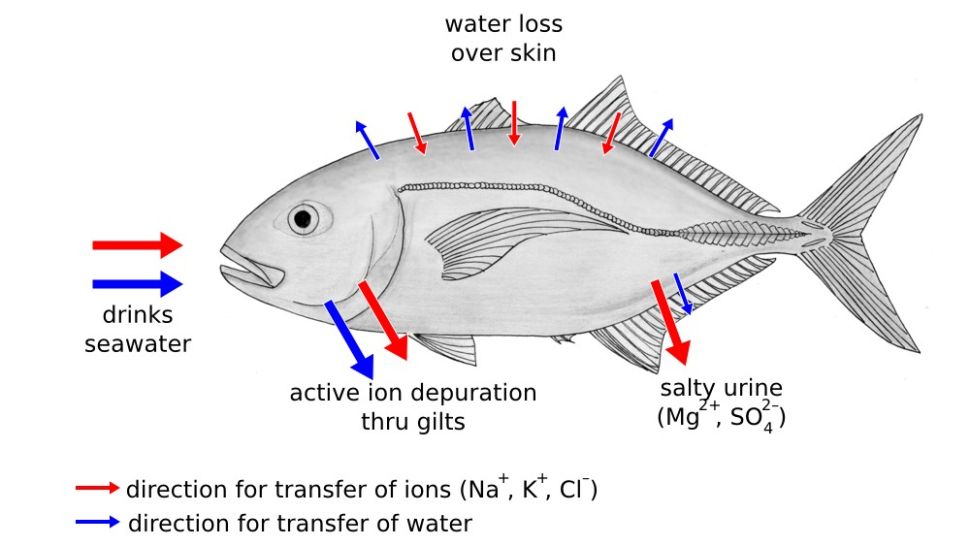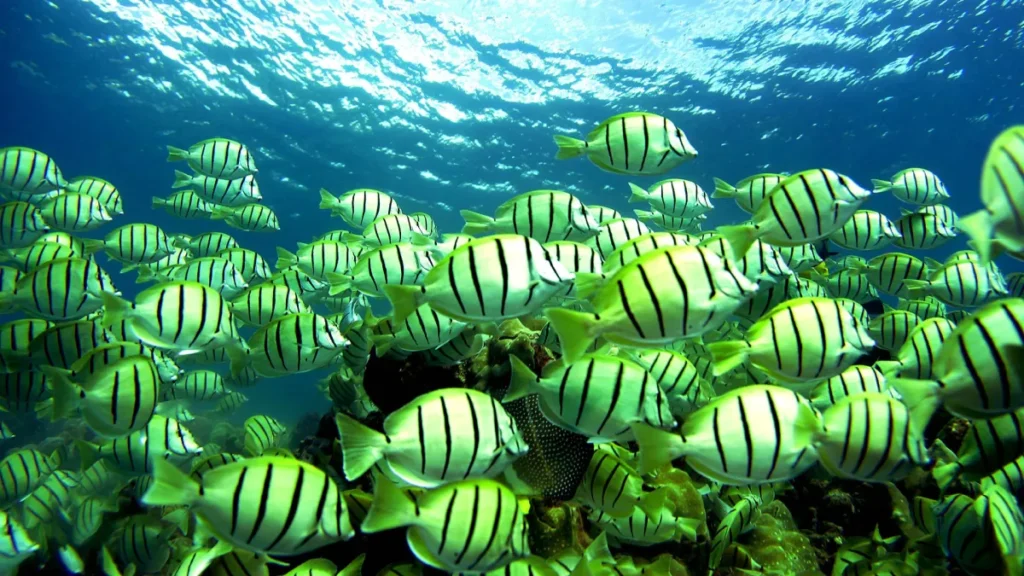The quantity of water a fish consumes is determined by the salinity levels in its surroundings.
Embarking on the expedition to unravel the enigma of fish thirst, we plunge into the intricate domain where water, the universal solvent, engages in a mesmerizing dance of osmosis with solutes like salt across cell membranes.
Despite the perpetual immersion of fish in water, their hydration mechanisms unfold through unique strategies influenced by the salinity of their surroundings.
The narrative of a fish’s water intake is intricately interwoven with the tapestry of its habitat’s saltiness. Whether navigating the realms of saltwater or freshwater, fish draw water through their mouths, yet the crux of absorption occurs via their skin and gills in a captivating osmotic ballet.
As described by Tim Grabowski, the marine biologist from the University of Hawaii, a fish resembles a “leaky boat in the water,” engaging in a ceaseless exchange between its body and the external environment.
For inhabitants of the deep, particularly those in the vast expanse of the ocean, the challenge lies in the ongoing tug-of-war between the salt content of seawater and their blood. The imbalanced equation, with seawater holding approximately 4.7 ounces of dissolved salt per gallon (35 grams per liter) and fish blood containing about 1.2 ounces of salt per gallon (9 grams per liter), subjects the oceanic inhabitants to a perpetual state of thirst.
Enter the clandestine heroes — specialized gill cells known as chloride cells.
These microscopic pumps tirelessly expel salt from the fish’s body, executing a meticulous dance to retain as much water as possible. Intriguingly, marine dwellers showcase a minimalist approach to urination, infrequent yet impactful, with their urine serving as a concentrated testament to the perpetual quest for equilibrium in the depths below.
Thus, the subaqueous journey unfolds, revealing the distinctive strategies fish employ to quench their enduring thirst in the heart of the underwater realm.

In the watery domain, fish conduct a captivating ballet of hydration strategies, each species gracefully dancing to the unique rhythms dictated by their aquatic habitats. Melanie Stiassny, a curator in the Ichthyology Department at the American Museum of Natural History in New York City, unravels the aquatic paradox faced by freshwater fish. Unlike their marine counterparts, these fish contend with a constant influx of water, posing a potential threat to the delicate balance of vital salts crucial for physiological functions.
Tim Grabowski, a marine biologist at the University of Hawaii, unveils the clandestine rituals of freshwater fish, tirelessly warding off unwanted water and rarely drinking intentionally.
Their defense against this aqueous barrage? Continuous urination, ensuring that expelled urine is predominantly water.
Chloride cells, present in both freshwater and marine fish, take center stage, yet their choreography differs. For freshwater fish, these cells pull salt into their bodies, a process demanding considerable energy.
Melanie Stiassny emphasizes the energetic cost, particularly for saltwater fish, which actively pump out salt after imbibing water.
Amidst this ballet, outliers emerge, such as sharks, defying the norm with a salty secret. Sharks, with their high concentrations of urea, strategically balance the passive influx of water, expelling excess salt through chloride cells in a rectal gland.
In this aqueous symphony, the universal melody resounds — the quest for the perfect salty balance, the key to hydration for fish navigating the complex currents of their underwater kingdoms.
